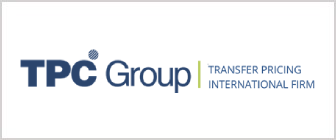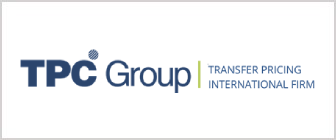Currently, multinational companies face an increasing number of Transfer Pricing audits around the world, while tax authorities seek additional revenue and prioritize compliance and transparency. Thus, Transfer Pricing regulations are becoming stricter to avoid double taxation effects and for business groups to generate fair tax bases for the Tax Authorities of each country, given that the capital flow strategies of organizations are becoming more sophisticated and aggressive.
A high percentage of the transactions of multinational companies are between related parties, that’s why it is very relevant to be prepared and maintain adequate compliance in Transfer Pricing matters.
Therefore, we introduce the main changes in Transfer Pricing:
- Increasing reforms in Transfer Pricing legislation
Tax authorities globally continue to promote and adopt reforms in their Transfer Pricing legislation to comply with OECD recommendations and optimize tax control.
- Collaboration between tax authorities and enhanced focus on the audit of cross-border and domestic-related party transactions
Tax authorities are increasingly cooperating with each other and with tax authorities in other regions to detect and prosecute tax avoidance strategies employed by multinational companies. The Global Forum on Transparency and Information Exchange for Tax Purposes has proven to be a powerful tool in the international community's fight against tax evasion, contributing to the identification of over € 114 000 million of additional revenues (taxes, interest, penalties) in recent years, with over € 30 000 million identified by developing countries, as a result of information exchanges.
Tax authorities are paying increasing attention to cross-border transactions between multinational companies due to the high level of scrutiny and transparency established globally. In addition, Tax Authorities are increasingly interested in identifying abuses in related company transactions with tax benefits or in areas of economic benefit.
- Enhancement in the use of digital tools by the Tax Authorities
Tax authorities are implementing digital technology systems and risk-based tools to enhance their audit capacity and analyze and monitor cross-border transactions.
- Increased audit on the transfer of intangibles and payments for services to related companies abroad
Currently, the Tax Administration is focusing on transactions related to intangibles, such as share certificates, trademarks, patents, and trade secrets, given that these transactions can greatly impact companies' tax results. Additionally, Latin American tax authorities are expected to increase the use of the profit test to evaluate and verify the substance and the Transfer Pricing in service transactions between related companies.
- Increased awareness of documentation compliance.
Companies are more aware of the importance of establishing transfer prices correctly and documenting their multinational transactions properly to avoid problems with tax authorities in case of an audit, as well as complying with reviewing the results and preparing the necessary supporting documentation to report transactions under current regulations.
On the other hand, Latin American Tax Authorities are increasingly implementing the OECD recommendations on Transfer Pricing documentation at three levels: Transfer Pricing Study, Master File, and Country-by-Country Report.
- Increased attention to digital transactions
Tax authorities are paying increasing attention to digital transactions and companies with online and subscription business models, given that these transactions can be more difficult to monitor and regulate, seeking to verify the profits earned by such companies in the markets where they earn their revenues are aligned to value creation.
- Increasing adjustments and effective collection of Transfer Pricing revenues
Due to the considerable amount of tax revenue generated by Transfer Pricing adjustments, it is anticipated that many tax administrations will continue to adjust the valuation of intercompany transactions to increase their collection results.
A STRATEGIC APPROACH TO TRANSFER PRICING
Currently, multinational companies aim to increase control over their Transfer Pricing perspectives to minimize risks. Thus, they are focusing on standardization and consistency of processes and looking for technology-based solutions. Forward-thinking companies are taking a strategic approach to Transfer Pricing. They are reassessing their processes, technology choices, and philosophy for managing Transfer Pricing activities to better adapt to the current changing tax landscape.
COLA-COLA CASE
The Coca-Cola case is an important model for Transfer Pricing globally. The decision not only complies with OECD principles but sets out how to analyze a Transfer Pricing issue and marketing intangibles, prepare Transfer Pricing documentation, ensure that important legal agreements are properly executed, and ultimately defend against a Transfer Pricing case in detail.
On November 18, 2020, the U.S. Tax Court ruled that the IRS had not abused its discretion under §482 when it reallocated over US$ 9 thousand million in revenue for fiscal years 2007 to 2009 to petitioner Coca-Cola from its foreign manufacturing subsidiaries. In applying the Transfer Pricing method on which its refund position was based, the taxpayer was based on the terms of an IRS Closing Agreement for 1987 to 1995 (the "Closing Agreement").
Specifically, the issue was whether the court would follow the 10-50-50 apportionment formula for the allocation of beverage concentrate sales revenue to its Points of Supply under the Closing Agreement. Coca-Cola followed this formula for years after the termination of the Settlement Agreement. Coca-Cola argued that the IRS's use of a new method, the Comparable Profit Method ("CPM"), was inappropriate and misplaced.
The Coca-Cola case in the U.S. allows taxpayers and tax authorities to improve their Transfer Pricing positions and interpretations by understanding more clearly what a reasonable Transfer Pricing policy should represent. It also emphasizes the importance of legal agreements that must be perfectly aligned with the specific Transfer Pricing Policy. Transfer pricing documentation must be integrated with the corresponding supporting evidence, among which stand out the legal agreements reflecting the detailed Transfer Pricing positions.


